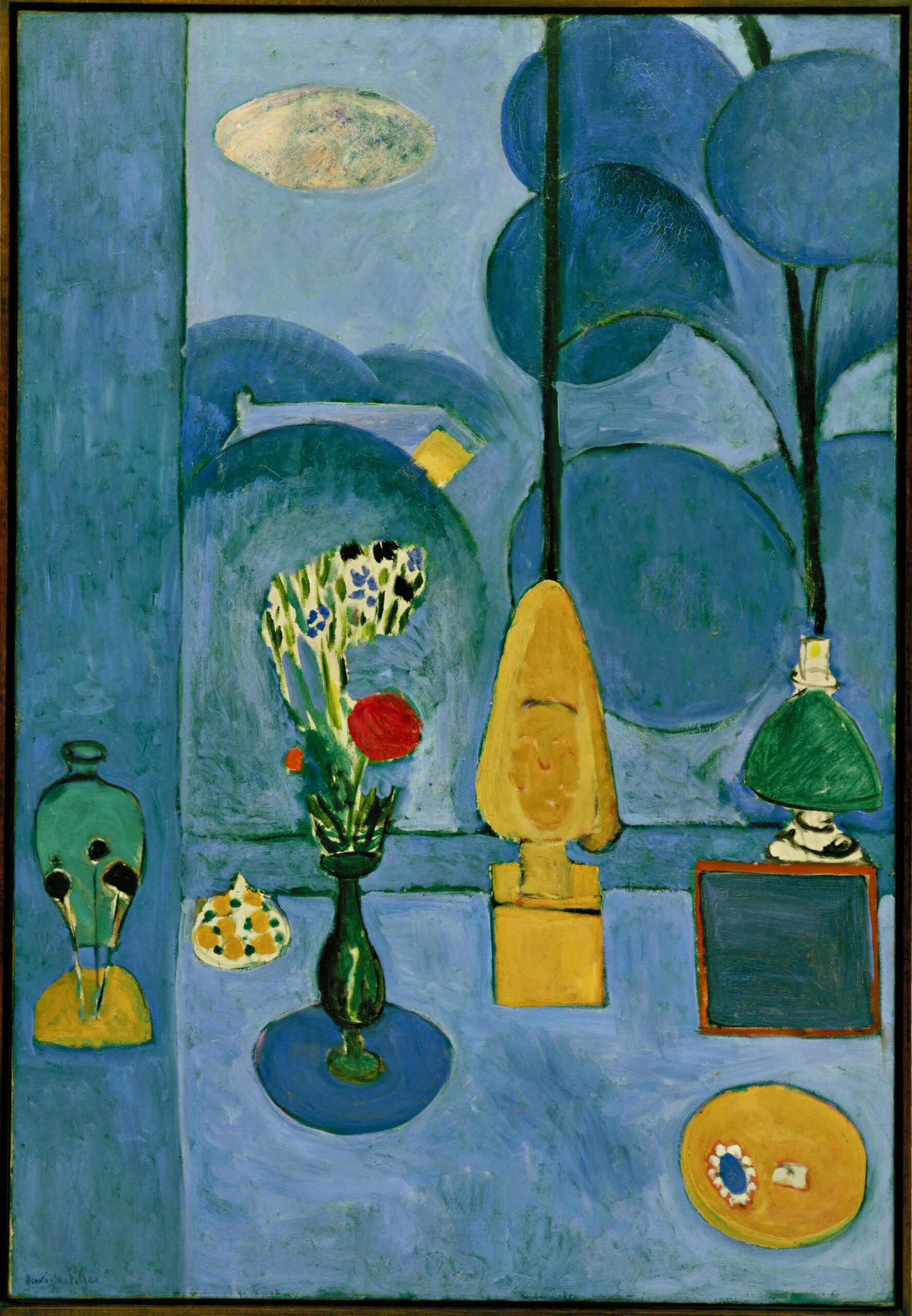
Fondation Louis Vuitton, in collaboration with the Museum of Modern Art (MoMA), New York and the SMK – Statens Museum for Kunst, Copenhagen (National Gallery of Denmark) – is hosting the exhibition “Matisse, The Red Studio,” focusing on the genesis and history of this famous 1911 masterpiece, one of MoMA’s iconic works since its acquisition in 1949.
The large canvas depicts the artist’s studio filled with his paintings and sculptures, furniture, and decorative objects. This exhibition reunites the artworks shown in The Red Studio for the first time since they left Matisse’s studio in Issy-les-Moulineaux. The presentation also includes archival material and related paintings and drawings.

“Now over 110 years old, The Red Studio is both a landmark within the centuries-long tradition of studio paintings and a foundational work of modern art,” says Ann Temkin, MoMA’s chief curator. “The picture remains a touchstone for any artist taking on the task of portraying their studio. Matisse’s radical decision to saturate the work’s surface with a layer of red has fascinated generations of scholars and artists, including Mark Rothko and Ellsworth Kelly. Yet much remains to be explored in terms of the painting’s origin and history.”
The core of the exhibition features The Red Studio alongside the surviving six paintings, three sculptures, and one ceramic depicted in it. Created between 1898 and 1911, these objects range from familiar paintings, such as Young Sailor (II) (1906) – which will be exhibited in France for the first time in 31 years – to lesser-known works, such as Corsica, The Old Mill (1898), and objects whose locations have only recently been discovered. Three of these paintings – Bathers (1907), Le Luxe (II) (1907-08), and Nude with a White Scarf (1909) – belong to SMK as part of a significant collection of Matisse’s works, while the artist’s 1907 ceramic plate, depicted in the foreground, comes from MoMA’s collection.

The exhibition also includes a number of paintings and drawings closely related to The Red Studio, such as MoMA’s The Blue Window (1913), and the MNAM/Centre Pompidou’s Large Red Interior (1948), which help us narrate the painting’s complex path from Matisse’s studio to its eventual acquisition by MoMA. A rich selection of archival materials such as letters and photographs – many published or exhibited for the first time in connection with this project – disclose new information on the painting’s subject, evolution, and reception. The exhibition also includes a video devoted to conservation science, which presents recent discoveries about the process of making the painting.
Matisse’s The Red Studio depicts the artist’s work environment in the town of Issy-les-Moulineaux. The Red Studio was painted as part of a sequence of works requested by Sergei Shchukin, Matisse’s most loyal and courageous early patron. Shchukin eagerly purchased the painting’s predecessor, The Pink Studio, but declined to acquire The Red Studio. The painting remained in Matisse’s possession for 16 years, during which time it traveled to the Second Post-Impressionist Exhibition in London in 1912 and to New York, Chicago, and Boston for the 1913 Armory Show.
The Red Studio was finally purchased in 1927 by David Tennant, the founder of the Gargoyle Club in London, a members-only club that catered to artists and aristocrats alike. The painting hung in the Gargoyle Club until the early 1940s; soon after, it was purchased by Georges Keller, director of the Bignou Gallery in New York. In 1949, The Red Studio was acquired for MoMA’s collection.
The work then got a second life. From 1949, New York artists and all those who happened to be passing through stopped in front of this painting, whose radical novelty was suddenly rediscovered. In the late 1940s, Matisse himself referred to what made the 1911 work unique: its “abstraction,” owing to the haunting prevalence of the color red, despite the precise depiction of the furniture, paintings, and objects in Matisse’s Issy-les-Moulineaux studio at the time. Matisse would come up with a new series of paintings using the artist’s studio environment as their subject, particularly the 1948 Large Red Interior, which entered the collections of the Musée National d’Art Moderne in 1950 after being exhibited in New York by his son Pierre Matisse in February 1949. This work is present in the exhibition, evoking the importance of Matisse’s painting in the post-war years in Paris as well as in New York, and emphasizing the artist’s presence at the MNAM as well as at MoMA.
The dialogue between The Red Studio of 1911 and The Large Red Interior of 1948 will be highlighted especially in the Fondation’s exhibition, demonstrating how, within a span of nearly 40 years, Matisse reinterprets this pioneering painting at a time when his work is undergoing profound change. The two paintings go on to lead parallel lives, serving as inspiration to many American and European artists.
The exhibition was organized by Ann Temkin– the Marie-Josée and Henry Kravis Chief Curator of Painting and Sculpture at the MoMA – and Dorthe Aagesen, SMK’s Chief Curator, with the assistance of the Archives Henri Matisse. The exhibition is accompanied by a catalogue published in French by Fondation Louis Vuitton and Les Éditions Hazan, edited by Ann Temkin and Dorthe Aagesen, and initially co-published in English and Danish by MoMA and SMK.







